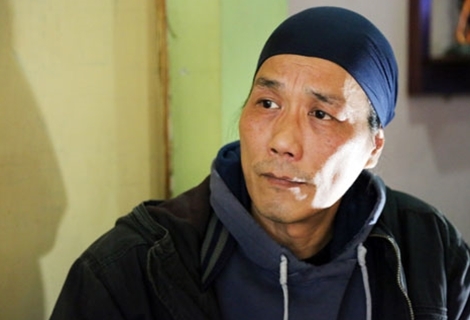 Life & Style
Life & Style

 |
| Folk culture and music researcher Bùi Trọng Hiền. Photo cand.com.vn |
Folk culture and music researcher Bùi Trọng Hiền has released a new book about ca trù, or ả đào (ceremonial singing). He spent nine years making the book, which earned him the folk music Trần Văn Khê Award last year.
Vietnam News Agency's Thể Thao và Văn Hóa (Sports & Culture) daily chats with Hiền about his new work.
Ả đào is a complex form of sung poetry found in the north of Việt Nam from the 11th century. What inspired you to make this book?
Ả đào is important in Vietnamese traditional music. I thought it was also important to establish a general stock of ả đào. But it is difficult to begin researching because there are very few ả đào artisans now alive, and few materials.
Since 2005, I wanted to learn about it, but I couldn't. However, at the National Ca Trù Festival in August 2014 I was invited to be a jury member, and the panel included artisan Nguyễn Phú Đẹ, the last remaining well-known ả đào artisan of the 20th century.
We saw a repertoire on stage which the singer performed with a paper fan. Only Đẹ knew that it was wrong, and he analysed its departure from the traditional form. I immediately recognised the important role of a master performer like Đẹ.
He was the last artisan - the only person who could answer questions about ả đào. At that time, I myself still didn’t have a good grasp of this genre, I only felt the good and the bad, but I didn’t yet know the right and wrong of the sound rules.
After the festival, I came home and talked with my wife and decided to stop all my other work. I went to the northern province of Hải Dương to live with artisan Đẹ, learning everything I could about ả đào.
During this time, I became obsessed with finding material sources to support my research. I aimed to finish my research as soon as possible because of Đẹ’s old age. Around the time I completed my basic research in early 2016, the artist suffered a stroke.
What was the biggest difficulty for you in completing the book?
I liken myself to explorer in a dense forest and only having to grope around to find my way. If I did research on cải lương (reformed opera) I would have support from cải lương artists in the whole nation. But researching ả đào, I have only artisan Đẹ's help. Beyond that, I simply have to listen and analyse based on tapes and video cassettes.
Luckily, I received strong support and help from traditional music masters such as late Professor Trần Văn Khê and music researcher Đặng Hoành Loan. Professor Khê gave me all documents he recorded in 1976 about artisans Quách Thị Hồ, Nguyễn Thị Phúc and Đinh Khắc Ban.
Researcher Loan provided with a lot of data about ả đào for my research. Plus, I also received rare documents sent by people living in the United States. I collected the remaining "fragments" of ả đào like that.
I work like a sound archaeologist. Artisan Đẹ and I worked together for one year until he became ill. The first and most important thing I found is that ả đào has an assembled structure.
Could you introduce the book?
I gained access to a lot of interesting information. There are many discoveries about new melodies in ả đào that have never been published in historical records. But they could be found in documentary tapes performed by artisans Phúc and Đẹ.
Additionally, I found connections among ả đào and other art genres such as tuồng (classical drama), nhã nhạc (royal court music) and đờn ca tài tử (southern folk music) during my research. The interesting thing is that these genres are all part of the traditional music flow from north to south of Vietnamese people.
What did you find most fascinating in your research on ả đào?
I was truly amazed by the assembled structure, demonstrating a very modern, extremely precise and scientific way of thinking within ả đào.
The second is finding traces of ancient Vietnamese tones, such as ancient music with only 3 notes.
It can be said that the structure and melody of ả đào songs are like playing with the sounds of the ancient people. Each diagram represents their creative thinking.
What do you think about ả đào clubs in Hà Nội?
There are many clubs in Hà Nội. But some clubs sing ả đào without its instrument, called phách (a wooden box) which is played by a female singer.
It is true that ả đào faded away for more than 50 years. When it was revitalised, the professional training no longer existed, so most ả đào performers are self-taught through the old tapes. Some of them are lucky to have learned from the last artisans for a short time. In the old days, ả đào performers were trained at very young age and normally they were able to perform after ten years of training. There were always managers or old singers in charge of correcting mistakes made by ả đào performers.
Ả đào theatre is the first chamber music theatre in Việt Nam. The theatre manager was an ả đào female singer. — VNS




